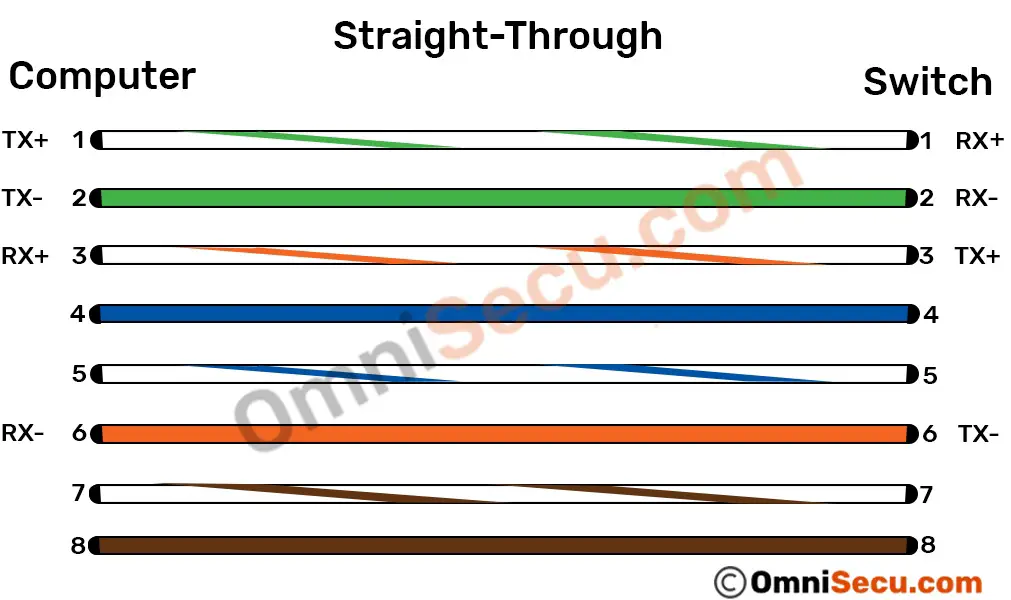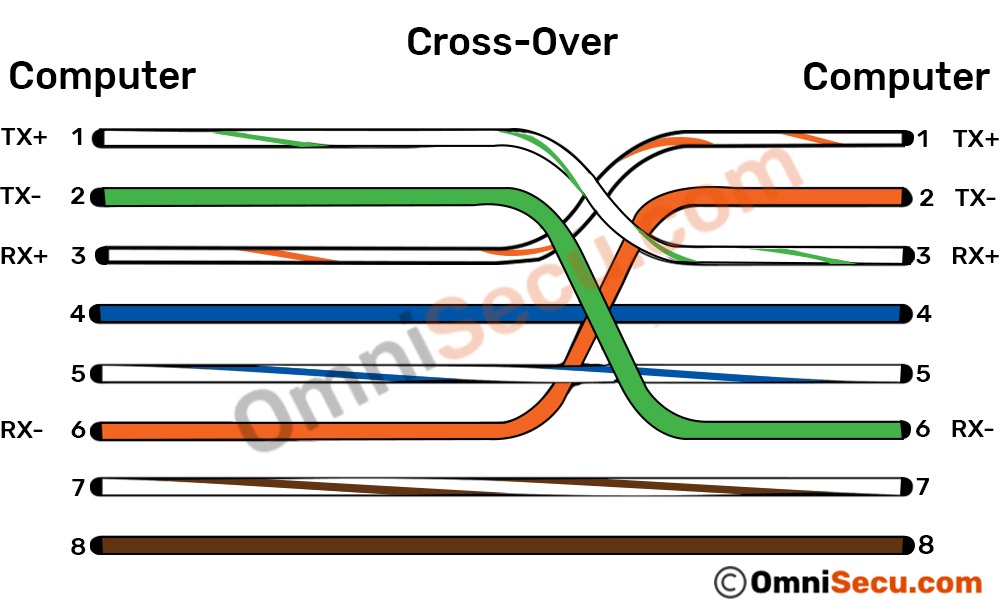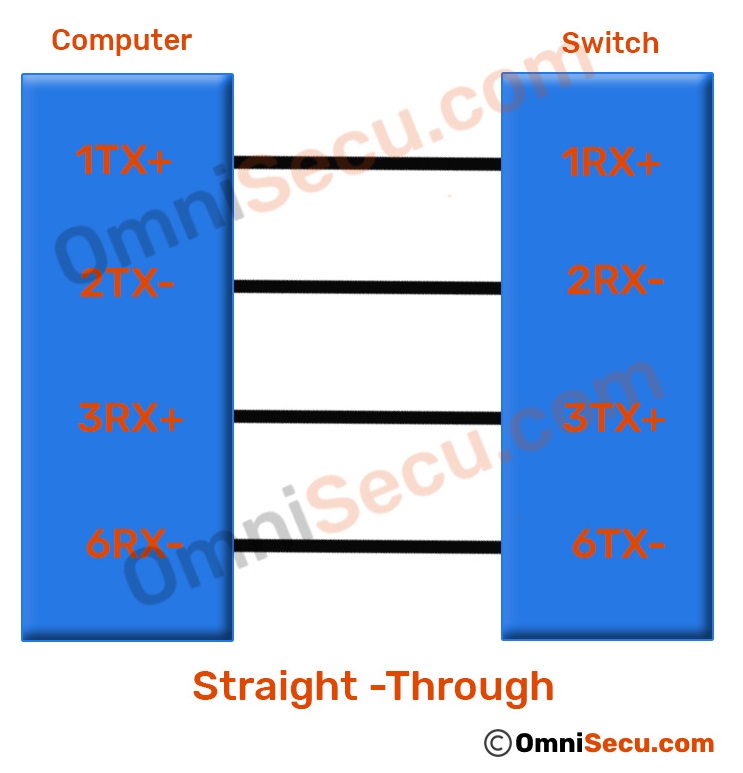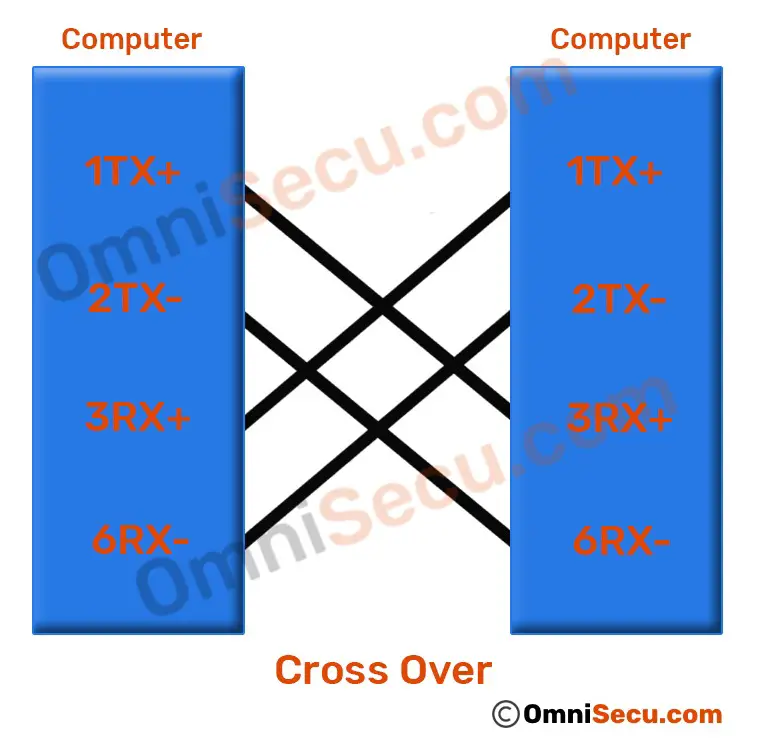Straight-Through and Cross-Over cables, Difference between Straight-Through and Cross-Over cables
Straight-Through Cables
In Ethernet (10 Mbps) and FastEthernet (100 Mbps) standards UTP cabling use only four wires when sending and receiving information on the network. The four wires used for sending and receiving information in Ethernet (10 Mbps) and FastEthernet (100 Mbps) standards are wires 1, 2, 3, and 6. When you configure the wire for the same pin at either end of the cable, this is known as a straight-through cable.
Note that Gigabit Ethernet standards use all the eight wires in twisted pair cables for sending and receiving information on the network. Please visit next link to learn about Gigabit Ethernet Pinout.
From the figure we can see that the wires 1 and 2 are used to transmit the data from the computer and 3 and 6 are used to receive data on the computer. The transmit wire on the computer matches with the receive wire on the switch. For the transmission of data to take place, the transmit pins on the computer should match with the receive pins on the switch and the transmit pins on the switch should match to receive pins on the computer. Here we can see that the pins 1, 2, 3 and 6 on the computer matches with pins 1, 2, 3 and 6 on the switch. Hence, we use the term Straight-through.
Following image shows the wire/pin positions of a Straight-through Unshielded Twisted Pair cable, using TIA/EIA 568A standard.
Note that the white striped wires are used to connect positive pins and solid color wires are used to connect negative pins.

Cross-Over Cables
If we want to connect two computers together with a straight-through cable, we can see that, the transmit pins will be connected to transmit pins and receive pins will be connected to receive pins. We will not be able to directly connect two computers or two switches together using straight through cables.
To connect two computers together without using a switch (or two switches directly), we need a crossover cable by switching wires 1 and 2 with wires 3 and 6 at one end of the cable. If we shift the pins, we can make sure that the transmit pins on Computer A will match with the receive pins on Computer B and the transmit pins on Computer B will match with the receive pins on Computer A.
Following image shows the wire/pin positions Cross-over Unshielded Twisted Pair cable, using TIA/EIA 568A/568B standards.
Note that the white striped wires are used to connect positive pins and solid color wires are used to connect negative pins.

The following table illustrates the different types of twisted pair cable which must be used to connect different network infrastructure devices.
| Hub | Switch | Router | Workstation | |
|---|---|---|---|---|
| Hub | Cross-over | Cross-over | Straight | Straight |
| Switch | Cross-over | Cross-over | Straight | Straight |
| Router | Straight | Straight | Cross-over | Cross-over |
| Workstation | Straight | Straight | Cross-over | Cross-over |
Straight-through and Crossover terms are not much relevant for new Switch models. New Cisco Switches are packed with a feature known as Automatic Medium-Dependent Interface crossover (Auto-MDIX). Auto-MDIX watches for a wrong cable connection and automatically changes the pins to make the link work. Meaning that, you can use either Straight-through or Crossover to connect any type of device for Auto-MDIX enabled new switch models.

